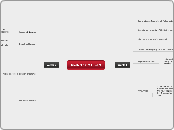av ashley field 13 år siden
537
Math 252.2

av ashley field 13 år siden
537

Mer som dette
The ratio table shows different multiplications of a certain number, leading up to the final answer.
: This is a visual way to solve a problem. To find the answer, one must draw a rectangle and place the number that is being divided into the other number in the row section of the rectangle. The answer will be found in the blocks. It's a missing number problem, where the person is trying to find what number would go on the top to attain the numbers in the middle that would add up to the answer : which is the original number being divided INTO.
: By using partial quotients, you multiply the denominator to friendly numbers that are less than the number you're dividing into. That way, you can take it step by step and add up the answers.
EX : 8,000 = 8 X 10^3
EX : 11,242 = 10,000 + 1,000 + 200 + 40 + 2
EX :
EX : Susan has 4 cups, each with 5 M&M's in it. How many M&M's does she have total? (Instead of multiplying, the problem could be approached by adding 5 together 4 times.
EX : 4 x (5 + 8) = (4 x 5) + (4 x 8)
EX : 1 x 6 = 6
EX : 6 x (8 x 2) = 8 x (2 x 6)
:EX : 5 x 10 = 10 x 5